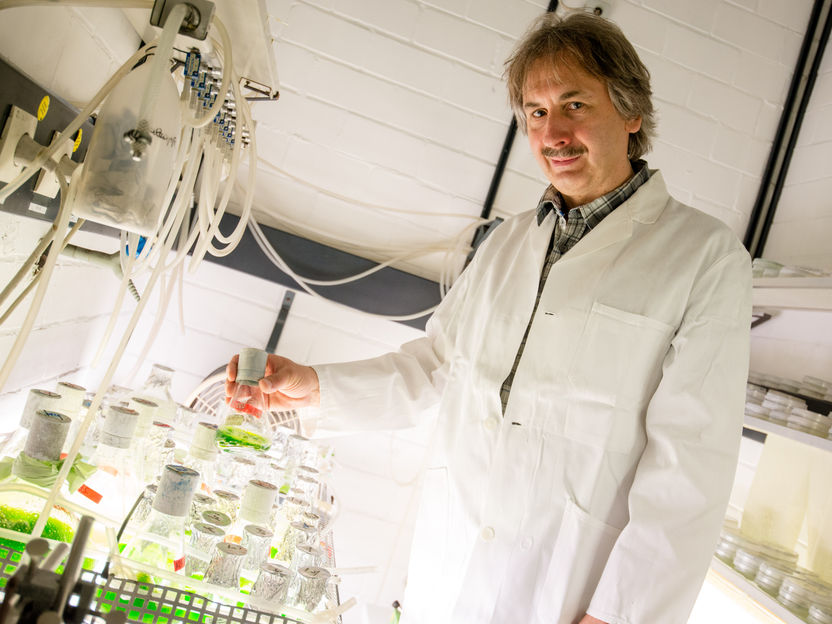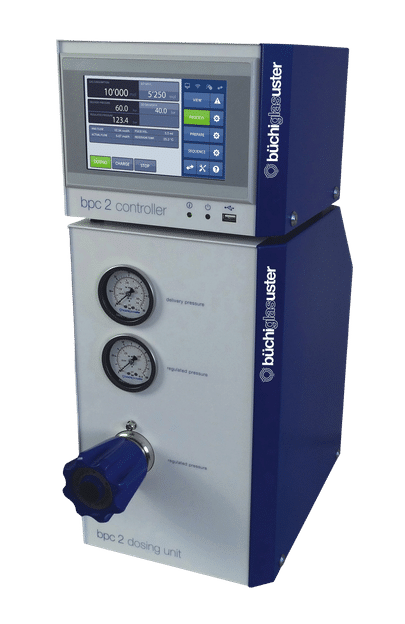Synthesis of hydrogen: Enzymes assemble themselves in the test tube
Researchers from Bochum have engineered a hydrogen-producing enzyme in the test tube that works as efficiently as the original. The protein - a so-called hydrogenase from green algae - is made up of a protein scaffold and a cofactor. The latter is the reaction centre where the substances that react with each other dock. When the researchers added various chemically synthesised substances to the protein scaffold, the cofactor spontaneously assembled.

Green algae possess an enzyme for producing hydrogen, called hydrogenase. Together with his colleagues, Thomas Happe engineers such enzymes in the test tube.
© RUB, Marquard
The team headed by Dr Jens Noth and Prof Dr Thomas Happe at the Ruhr-Universität Bochum report the results in the journal "Angewandte Chemie". The researchers intend to lay the foundation for artificial, hydrogen-producing enzymes that will one day be manufactured on an industrial level. Hydrogenases are very efficient producers of the potential energy carrier and can do without the expensive precious metal platinum which is currently required for hydrogen synthesis.
Replacing sulphur by selenium
In nature, the hydrogenase cofactor is made up of iron and sulphur atoms. They are bonded in the protein in a unique manner. In the artificial variant, the researchers replaced the sulphur atoms by selenium atoms, which have more than twice as much mass. Using this method, they marked the enzyme's cofactor and were able to analyse it in more detail.
The tests revealed that the artificial enzyme variant has the same biochemical properties as the original that occurs in nature. With the aid of other biophysical methods, the group intends to figure out the reaction mechanism in more detail that is used by the hydrogenase for the production of hydrogen.
Original publication
Other news from the department science

Get the chemical industry in your inbox
By submitting this form you agree that LUMITOS AG will send you the newsletter(s) selected above by email. Your data will not be passed on to third parties. Your data will be stored and processed in accordance with our data protection regulations. LUMITOS may contact you by email for the purpose of advertising or market and opinion surveys. You can revoke your consent at any time without giving reasons to LUMITOS AG, Ernst-Augustin-Str. 2, 12489 Berlin, Germany or by e-mail at revoke@lumitos.com with effect for the future. In addition, each email contains a link to unsubscribe from the corresponding newsletter.
Most read news
More news from our other portals
Last viewed contents

Modified 'white graphene' for eco-friendly energy - Scientists found a way how to use 2D material for hydrogen energy
Category:Branched-chain_amino_acids

CREPIM - MATERIAL & FIRE TEST EXPERT - Bruay-La-Buissiere, France

Carbon dioxide as a raw material for plastics and other products - Carbon dioxide is one of the main drivers of climate change – which means that we need to reduce Carbon dioxide emissions in the future. Fraunhofer researchers are highlighting a possible way to lower

BioChromato, Inc. - Kanagawa, Japan

Scientists show how to store liquid fuels in polymeric gels to prevent explosions and fires - Researchers from Japan investigate a new safer way to transport and store fuels
Stefan–Boltzmann_law
QIAGEN Genomics Enters Into Tuberculosis SNP Genotyping Research And License Agreement with TIGR and MMC - Groups Collaborate to Analyze Genetic Variation in Different Strains of M. Tuberculosis

Nantong XiangYang Optical Element Co.,Ltd. - Haian County,Jiangsu Province, China

BPC 2 Büchi pressflow controller | Gas meters | C3 Prozess- und Analysentechnik

Compounds made from ‘digested’ molecules feeds appetite for greener pharmaceuticals and agrochemicals - New method uses enzymes to produce indolic amides, carboxylic acids and auxins – vital for use in pharmaceutical and agrochemical industries





























































